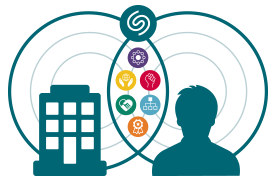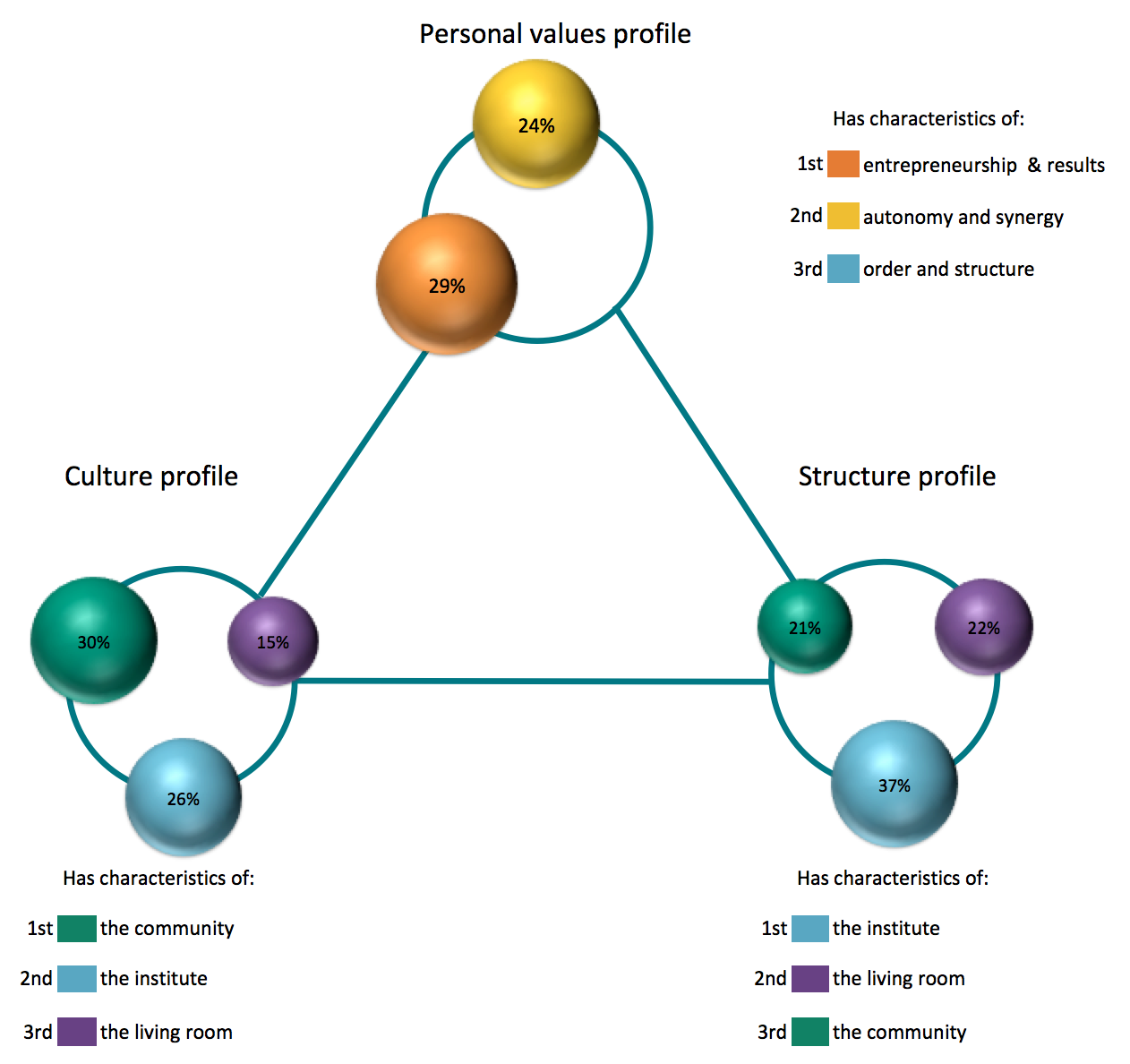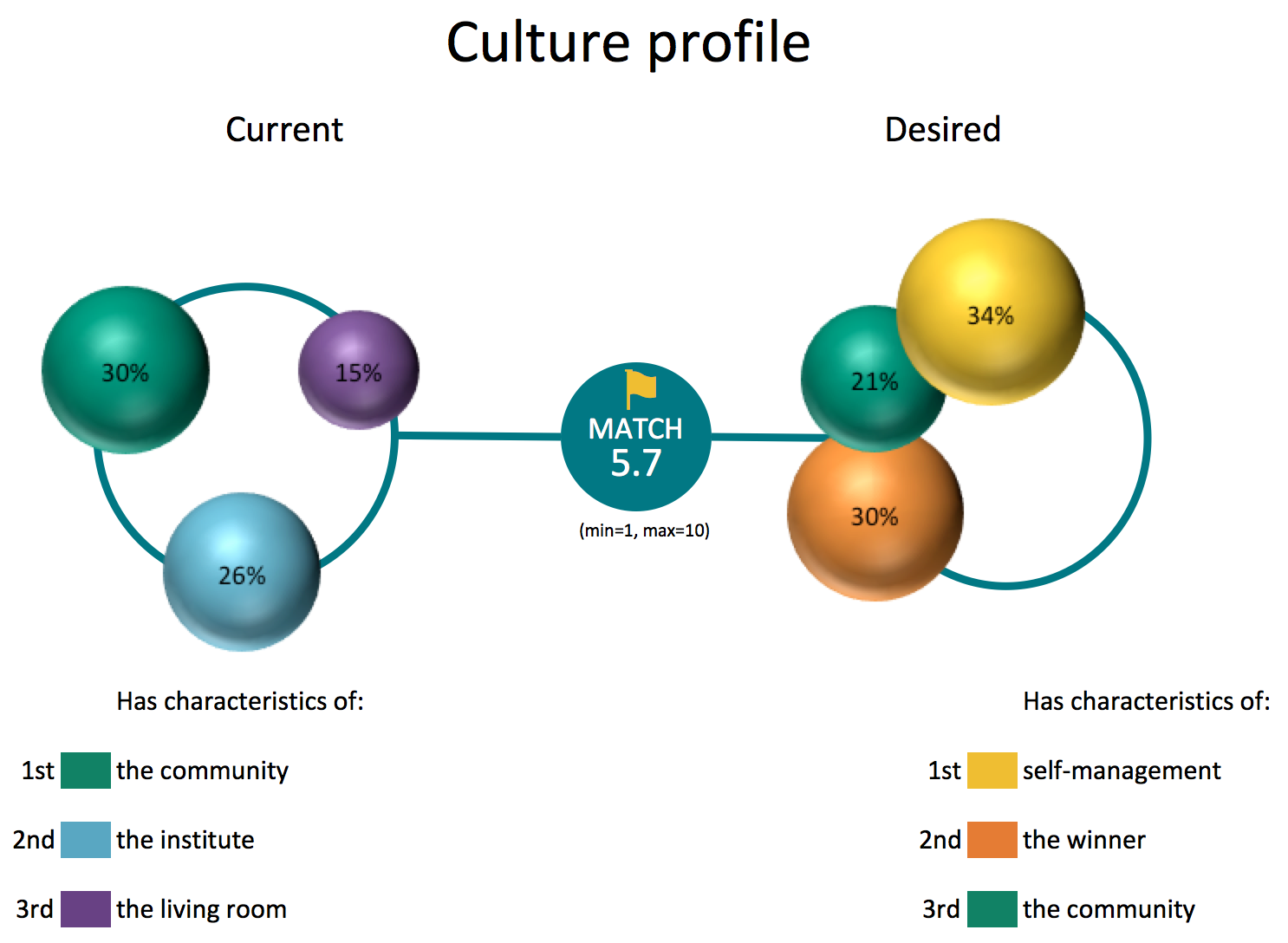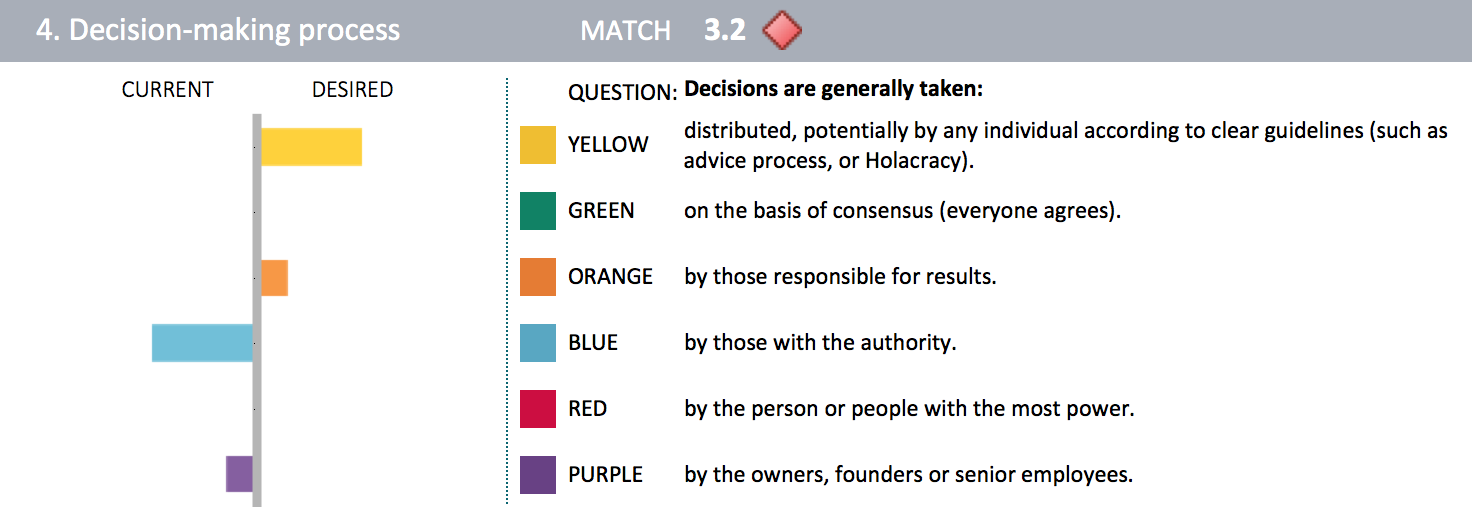Culture assessment
 Interventions and transition processes in organizations can only be successful when the culture and structure of the organization is aligned with the deeper drives of employees.
Interventions and transition processes in organizations can only be successful when the culture and structure of the organization is aligned with the deeper drives of employees.
The ValueMatch Culture Assessment provides insight into the dynamics between individuals and organization as well as providing crucial and concrete information for those who wants to bring about change in the culture and structure of the organization. These insights lead to better, more functional interventions and transition processes.
 This instrument is unique not only because it measures the values of organizational culture, but also the personal values of the employees. These are compared to see whether the current and desired culture fits the employees and so gives a clear view of what needs to be done in order to create a culture in which employees can optimally develop their qualities.
This instrument is unique not only because it measures the values of organizational culture, but also the personal values of the employees. These are compared to see whether the current and desired culture fits the employees and so gives a clear view of what needs to be done in order to create a culture in which employees can optimally develop their qualities.
Since the ValueMatch culture assessment is based on Graves's work, unlike most other instruments, it can be applied to any type of organization. We determine the type (stage of development) of the organization, and based on this, we can give advice regarding what a 'healthy' culture and structure is for a particular organization.
Moreover, during the development of this instrument, we have drawn considerable inspiration from the work of Frederic Laloux’s, Reinventing Organizations. This is why the ValueMatch culture assessment is ideally suited for organizations seeking more wholeness, self-management and evolutionary goals. This instrument gives insight into the characteristics of current culture and the best way to transform this step by step, into a teal culture.
The Culture Assessment consists of 17 questions about the person him/herself and 27 questions about the culture and structure in the organization. It measures:
 that drives people, what their deep-seated motivations are;
that drives people, what their deep-seated motivations are;- The perception employees have of the culture and structure of the organization;
- how employees would like to see the culture and structure of the organization.
The assessment measures and compares this information and provides insight into, among other things: the level of development of the organization and employees.
- the degree to which the organizational culture matches the deeper values and drives of the employees;
- if this does not work, which cultures and systems do suit the employees?
- whether planned changes are in line with employee potential;
- what is a logical next step in the development of the organization?
- the willingness of employees to change;
- what specific aspects of culture and systems give friction and require attention.
 By making group profiles of different departments and sections of the organization (e.g. senior management, management, employees or organizational units in different countries), further insight can be gained into their characteristics and bottlenecks in their mutual cooperation. Often internal conflicts are related to differences in deeper values and so gaining a better understanding of these is essential in order to resolve matters.
By making group profiles of different departments and sections of the organization (e.g. senior management, management, employees or organizational units in different countries), further insight can be gained into their characteristics and bottlenecks in their mutual cooperation. Often internal conflicts are related to differences in deeper values and so gaining a better understanding of these is essential in order to resolve matters.
After employees have completed the questionnaire we generate:
- a personal values report for every employee giving insight into the values and drives;
- a cultural report for every employee which gives insight into the dynamics between the individual and organization;
- culture profile for the group or different groups;
- a group values profile, which exposes the deeper values and drives and potential of employees.
The successful application of this assessment requires guidance from one of our ValueMatch Certified Practitioners. They have been trained to get the right information from the available data and to link this to the developmental issues of your organization.